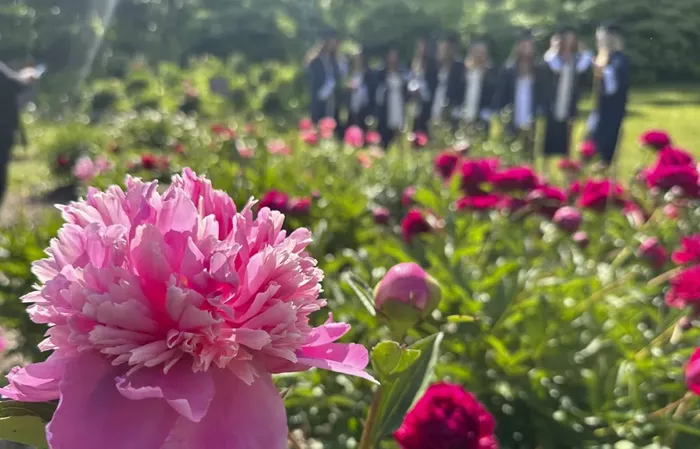Each spring, the University of Michigan’s Nichols Arboretum becomes a vibrant destination for plant lovers eager to experience one of the world’s most impressive collections of peonies.
The W.E. Upjohn Peony Garden boasts the largest assortment of historic herbaceous peonies—many dating back before 1950—making it a botanical treasure trove for visitors.
This year, the garden dazzles with thousands of flowers in shades of red, white, pink, and countless variations, captivating visitors with their rich colors and intoxicating fragrances. The garden’s curator, David Michener, describes the peonies as mesmerizing, with their diverse forms and scents drawing tens of thousands of admirers each season.
The garden’s collection includes over 300 cultivated varieties from the 19th and early 20th centuries, representing American, Canadian, and European heritage. At peak bloom, visitors can enjoy up to 10,000 flowers, creating a breathtaking floral display that also serves as a living laboratory for research in plant genomics and social studies.
Despite the garden’s beauty, recent vandalism damaged about 250 blooms, a loss deeply felt by the community. Yet, the garden continues to thrive, with peony-watchers closely following bloom updates on social media, as the timing of the blossoms depends on fluctuating day and night temperatures rather than the calendar.
Open daily from sunrise to sunset and free to the public, the Peony Garden invites visitors to immerse themselves in the vibrant colors and enchanting scents of these historic flowers—best enjoyed early in the morning or late in the evening when their fragrance is most potent.
For many, like high school graduate Melanie Millar, the garden is not only a place of natural beauty but also a perfect backdrop for memorable moments and celebrations. The peonies at Michigan’s Nichols Arboretum continue to bloom as a symbol of nature’s artistry and resilience.


